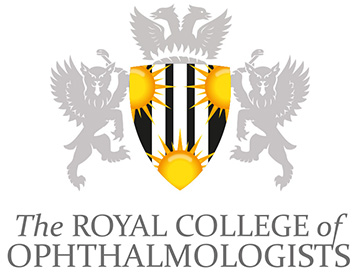Response to NICE guidance on Ciclosporin for treating dry eye disease that has not improved despite treatment with artificial tears
16 December 2015
Ciclosporin (1mg/ml, Ikervis®) is a sterile, positively charged, oil-in water, unpreserved ophthalmic emulsion for the treatment of severe keratitis in adult patients with dry eye disease, which has not improved despite treatment with tear substitutes. It is administered as a once daily eye drop at bed time.
The Royal College of Ophthalmologists welcomes the decision by the National Institute for Health and Care Excellence (NICE) to recommend Ciclosporin (1mg/ml) as an option for treatment for these patients, many of whom are currently using an unlicensed veterinary preparation (Optimmune®, ciclosporin 0.2% ointment) prescribed as a hospital ‘special’.
Ciclosporin is a calcineurin inhibitor which has an anti-inflammatory effect on the ocular surface, blocking the expression of pro-inflammatory cytokines and subsequently enters corneal and conjunctival infiltrated T-cells. It contains an excipient, cetalkonium chloride, which acts as a cationic agent designed to prolong ocular surface retention time.
The definition of ‘severe keratitis’ is a corneal function score (modified Oxford scale (CFS)) of 4, a Schirmer score (without anaesthesia) of 2 mm to 10 mm and an Ocular Surface Disease Index (patient reported outcome (OSDI)) score of 23 or more. The primary end-point of randomised controlled trials was a change from baseline in CFS-OSDI, a composite variable combining the CFS and OSDI scores, at month 6. The definition of response using CFS-OSDI was improvement of 2 points or more from baseline in CFS and improvement of 30% or more from baseline in OSDI. A meta-analysis of CFS-OSDI response rate at 6 months showed greatest benefit of ciclosporin 1mg/ml plus artificial tears compared with the vehicle plus artificial tears in patients with severe dry eye disease but specifically Sjögren’s syndrome with severe dry eye disease subgroup. The most common adverse reactions with ciclosporin are eye pain, eye irritation, lacrimation, ocular hyperaemia and eyelid erythema but these are transient with limited impact in quality of life
Whilst NICE considered ciclosporin 1mg/ml would show similar efficacy to artificial tears combined with eye drop formulations of glucocorticoids, it is important to highlight the disadvantage of long-term topical glucocorticoids (glaucoma and cataract) which were not considered.
The acquisition cost of a monthly course of ciclosporin is £72 (excluding VAT) although costs may vary in different settings because of negotiated procurement discounts. NICE considered the cost of ciclosporin 1mg/ml to be reasonable compared with the other ciclosporin formulations. There is a costing tool (http://www.nice.org.uk/guidance/TA369/resources) to help hospital eye departments with the implementation of this technology within a three month period from Publication date.
What does this mean for patients?
If you have severe dry eye disease that has not improved despite treatment with artificial tears, and your doctor thinks that ciclosporin is the right treatment, you should be able to have the treatment on the NHS.
Ciclosporin should be available on the NHS within 3 months of the guidance being issued.
